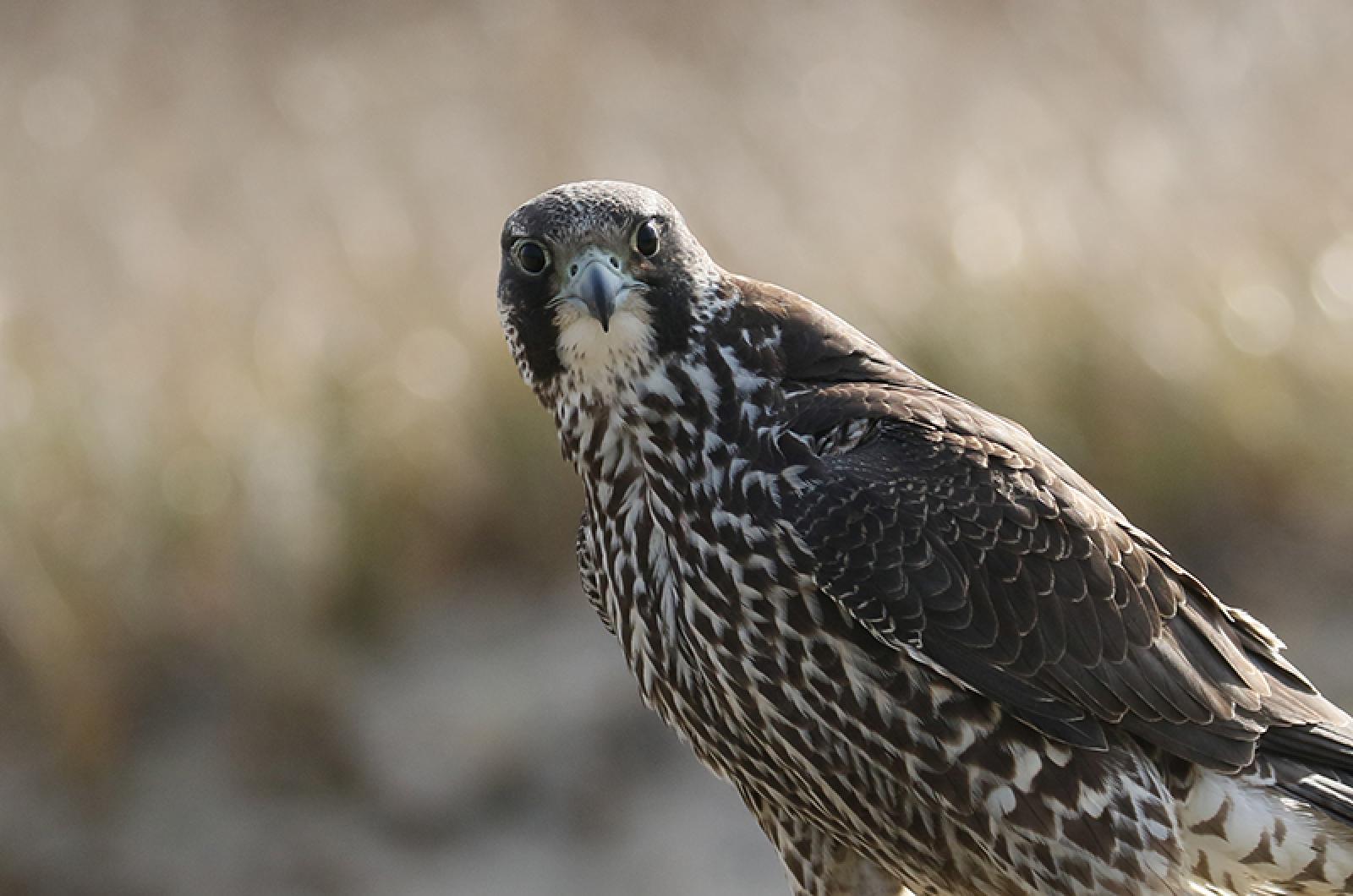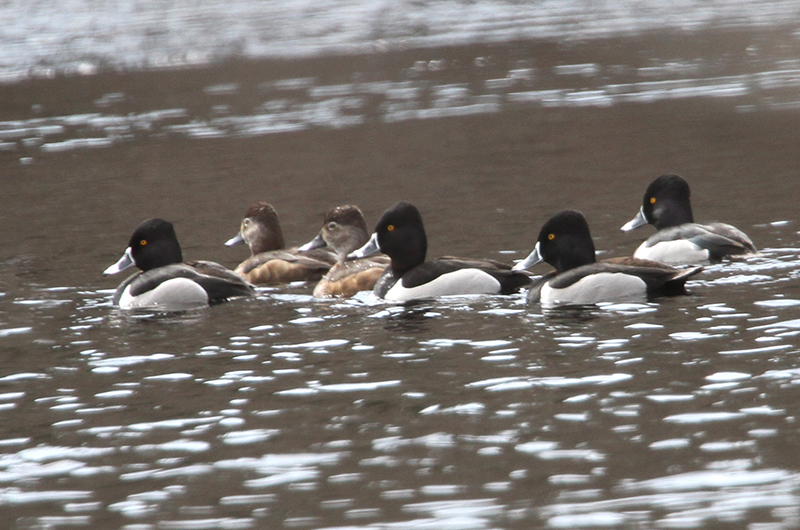Fast-flying falcons are frequently found in these parts at this time of the year. Their long pointed wings and long narrow tail provide the aerodynamic structure that explains their high speeds.
The peregrine falcon has been clocked at horizontal speeds of almost 70 miles per hour, fast enough to overtake and catch most of their food. But that is slow compared to their power dives, or stoops, from high up in the sky, where their acute vision enables them to pick out individual birds. the ensuing power dive can reach speeds of 240 miles per hour. They keep their head and eyes focused on their target while they maneuver their body in pursuit. Their target may not know what hit them.
Fifty years ago the peregrine was nearly extinct just about everywhere except Alaska, a victim of poisoning primarily from the insecticide DDT, which caused their eggshells to be so thin that the eggs were crushed when the parents attempted to incubate them. This chemical also nearly wiped out bald eagles and ospreys. Their populations have rebounded since the Nixon administration banned the use of DDT in 1972. I well remember Gus Ben David’s report of seeing over 20 peregrines on one of his trips to Noman’s Land 20 to 30 years ago. And there have been several reports from past years of five or six peregrines near the Gay Head Cliffs.
This year peregrines have been observed in almost every month, including through the summer when a peregrine frequently hunted Little Beach in Edgartown. There have been two sightings this week. On Dec. 2 Thaw Malin and Cynthia Bloomquist observed one flying over their West Tisbury yard, and on Dec. 6 Bridget Dunnigan and Sea Williams spotted one at the Oak Bluffs Pumping Station.
Two other species of falcons are also around. The smaller merlin was spotted by Bob Shriber at Lobsterville Beach on Dec. 1. And a kestrel has been repeatedly seen by John Nelson throughout November and most recently on Dec. 4. This or another kestrel has also been seen by David Scott on Oct. 10, and by me on Nov. 25.
Bird Sightings
There have been two firsts for the season this week. Ring-necked ducks have finally been sighted. John Nelson spotted two of them at the Oak Bluffs Pumping Station on Dec. 6, as did Bridget Dunnigan and Sea Williams. The latter two observers also found an American coot there in addition to the more routine sightings of mute swan, American wigeon, mallard, black duck, bufflehead, double-crested cormorant, 3 great blue heron and 22 black-crowned night-herons. John Nelson reported many of the same species from that day, while Mike Zoll added four golden-crowned kinglets on Dec. 4.
Sharon Simonin spotted both a razorbill and a common goldeneye off East Chop on Dec. 6.
Bob Shriber reports finding three lesser black-backed gulls and two double-crested cormorants on Chilmark Pond on Dec. 4. That same day in Vineyard Haven Harbor he found 15 Bonaparte’s gulls, six ring-billed gulls, three double-crested cormorants and two fish crows. And in addition to the merlin mentioned above, he also spotted red-breasted mergansers, surf scoter, common eider, great egret, common and red-throated loon, and both Cooper’s and red-tailed hawks on Lobsterville Beach on Dec. 1. Allouise Morgan also observed a Cooper’s hawk perched on her deck railing on Dec. 6, while Hans Goeckel had a very wet Cooper’s hawk in his backyard on a windy and rainy Dec. 5.
On Dec. 4, John Nelson found five oystercatchers hanging in, as well as bufflehead, red-breasted mergansers, and black ducks. Both red-breasted and white-breasted nuthatches have been prevalent at his feeders as well as feeders in Luanne Johnson’s, Tim Leland’s, and my yards. Luanne Johnson also reports a brown creeper in her yard.
Please email your sightings to birds@mvgazette.com.
Robert Culbert is an ecological consultant with Nature Watch LLC living in Vineyard Haven.










Comments
Comment policy »